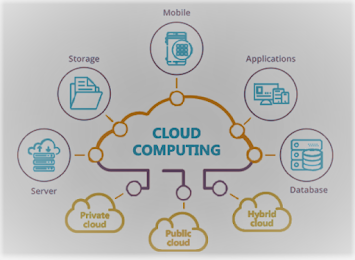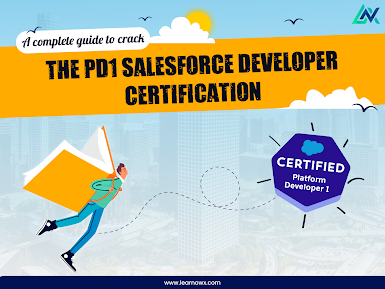What is AWS (Amazon Web Services): Cloud Computing Service
This post covers Amazon Web Services AWS Overview, Concepts, Architecture, and 5 motivations behind why one ought to begin learning Amazon Cloud
This post is for amateurs as well concerning experienced like Dba's, Developers, System Admin, and so on who are simply beginning to learn Amazon Cloud and covers a portion of the exceptionally fundamental inquiries like What is Cloud Computing, Service Model, Various Services presented by Amazon AWS and significantly more.
Amazon Web Services AWS: Introduction
In 2006, Amazon Web Services (AWS) started offering IT foundation administrations to organizations as web administrations — presently usually known as distributed computing. One of the critical advantages of distributed computing is the chance to supplant direct front capital framework costs with low factor costs that scale with your business. With the cloud, organizations never again need to anticipate and get servers and other IT foundations weeks or months ahead of time. All things considered, they can immediately turn up hundreds or thousands of servers in minutes and convey results quicker. Today, AWS gives a profoundly solid, versatile, minimal expense framework stage in the cloud that powers a huge number of organizations in 190 nations all over the planet.
What Is a Cloud Computing?
Distributed computing is the on-request conveyance of registering power, data set capacity, applications, and other IT assets through a cloud administrations stage using the Internet with pay-more only as costs arise estimating. Distributed computing gives a basic method for getting to servers, capacity, data sets, and a wide arrangement of utilization administrations over the Internet. In a cloud administrations stage, for example, Amazon Web Services claims and keeps up with the organization-associated equipment expected for these applications administrations, while you arrange and use what you really want through a web application.
What are Cloud Computing Service Models
1. Infrastructure as a Service (IaaS): Infrastructure as a Service (IaaS) contains the essential structure blocks for cloud IT and commonly gives admittance to systems administration highlights, PCs (virtual or on committed equipment), and information extra room.
2. Platform as a Service (PaaS): Platform as a Service (PaaS) eliminates the requirement for your association to deal with the basic foundation (normally equipment and working frameworks) and permits you to zero in on the organization and the executives of your applications.
3. Software as a Service (SaaS): Software as a Service (SaaS) gives you a finished item that is run and overseen by the specialist organization. By and large, individuals alluding to Software as a Service are alluding to end-client applications.
Distributed computing Deployment Models
There are four fundamental cloud organization models, which are:
1. Private cloud model: In this framework, the cloud foundation is set up on the reason for the elite utilization of an association and its clients. As far as cost-productivity, this sending model doesn't bring many advantages. Be that as it may, many huge ventures pick it given the security it offers.
2. Public cloud model: Public cloud is facilitated on the reason of the specialist co-op. All the specialist organization then gives cloud administrations to their clients. This arrangement is by and large embraced by numerous little to medium-sized associations for their non-center and a portion of their center capabilities.
3. Community cloud: The people group cloud model is a cloud framework shared by a gathering of associations of comparative enterprises and foundations with comparable prerequisites for example mission, security, consistency, and IT approaches. It might exist on or off-premise and can be overseen by a local area of these associations.
4. Hybrid cloud model: Hybrid cloud is a mix of at least two models, confidential cloud, public cloud, or local area cloud. However, these models keep up with the different elements they are amalgamated through a standard innovation that empowers the compactness of information and applications
AWS comprises of many cloud benefits that you can use in blends custom fitted to your business or authoritative necessities. This segment presents the major AWS administrations by classification. To get to the administrations, you can utilize the AWS Management Console, the Command Line Interface, or Software Development Kits (SDKs).
1. AWS Management Console: Access and oversee Amazon Web Services through the AWS Management Console is a basic and instinctive UI.
2. AWS Command Line Interface: The AWS Command Line Interface (CLI) is a bound-together instrument to deal with your AWS services.11 With only one device to download and design, you have some control over different AWS administrations from the
order line and mechanize them through scripts.
3. Software Development Kits: Software Development Kits (SDKs) work on involving AWS administrations in your applications with an Application Program Interface (API) custom-made to your programming language or stage.
Figure
4. Amazon EC2: Amazon Elastic Compute Cloud (Amazon EC2) is a web administration that gives a secure, resizable figure limit in the cloud. It is intended to make web-scale processing simpler for designers. The Amazon EC2 straightforward web administration interface permits you to get and design limit with negligible rubbing. It furnishes you with unlimited oversight of your processing assets and allows you to run on Amazon's demonstrated figuring climate.
5. Amazon EC2 Container Service: Amazon EC2 Container Service (ECS) is a profoundly versatile, elite exhibition compartment the board administration that upholds Docker holders. It permits you to handily run applications on an oversaw bunch of Amazon EC2 occurrences.
6. Amazon EC2 Container Registry: Amazon EC2 Container Registry (ECR) is a completely overseen Docker holder library that makes it simple for engineers to store, make due, and send Docker compartment pictures. Amazon ECR is incorporated with Amazon EC2 Container Service (ECS), improving your advancement in the creative work process
7. Amazon LightSail: Amazon Light sail is intended to be the simplest method for sending off and dealing with a virtual confidential server with AWS.
Capacity
1. Amazon S3: Amazon Simple Storage Service (Amazon S3) is an item stockpiling with a straightforward web administration connection point to store and recover any measure of information from any place on the web.
2. Amazon Elastic Block Store: Amazon Elastic Block Store (Amazon EBS) gives persevering block stockpiling volumes to involve with Amazon EC2 occasions in the AWS Cloud.
3. Amazon Elastic File System: Amazon Elastic File System (Amazon EFS) gives basic, adaptable document stockpiling for use with Amazon EC2 examples in the AWS Cloud
4. Amazon Glacier: Amazon Glacier is a solid, tough, and very minimal expense stockpiling administration for information documenting and long-haul reinforcement
Information base
1. Amazon Aurora: Amazon Aurora is a MySQL and PostgreSQL viable social information base motor that joins the speed and accessibility of very good quality business data sets with the straightforwardness and cost-viability of open source data sets
2. Amazon RDS: Amazon Relational Database Service (Amazon RDS) makes it simple to set up, work, and scale a social data set in the cloud
3. Amazon DynamoDB: Amazon DynamoDB is a quick and adaptable NoSQL data set that helps for all applications that need steady, single-digit millisecond dormancy at any scale
Want to Supercharge your business growth with customized AWS Development services - Get the best fast and reliable AWS solutions by hiring the best Amazon Web Services experts.
Being the top AWS Web Service provider, Force Bolt aims at transforming your way to cloud-native infrastructure. Our robust and affordable DevOps solutions and AWS cloud-managed services ensure a seamless transition from delivery to the deployment of AWS cloud applications.



Comments
Post a Comment